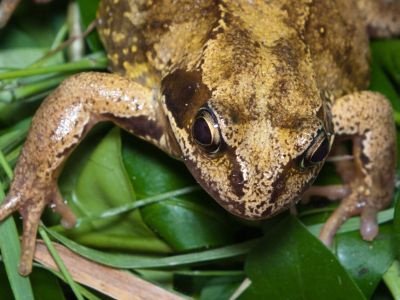Why Protect Amphibians in the Garden?
One in three amphibian species, including frogs, toads, and salamanders, are on the red list of endangered species according to the International Union for the Conservation of Nature. Amphibian friendly habitats in the garden are a small but important way to help reverse this trend. Some added benefits of amphibians in the garden include:
Beautiful chirping sounds that signal spring and sound throughout the summerNatural pest insect controlAn all-around healthier local ecosystemCute garden residents
How to Build an Amphibian Habitat
Creating habitats for garden amphibians is just one part of an overall plan to include more of these critters in your yard. The space needs to meet their needs and be hospitable, and one of the most important ways to do this is to limit or eliminate pesticide use. The pesticides harm amphibians but also destroy their food supply. Next, consider all the ways you can make your space friendlier for frogs, toads, and salamanders: Protect any existing habitat. Keep areas of your property, especially wetlands and ponds, natural. If you don’t have wetlands, consider creating a pond. Water is the number one attractant for amphibians. Fill your pond with plants to create a natural habitat. They provide important cover around the edge of a pond. Research native water plants that will attract local amphibians or contact your local extension office for the information. Create toad abodes. You can find these little houses at your local garden center. They provide a safe home for frogs and toads, but you can also make your own. A simple idea is to overturn a flowerpot. Hold one side up with a stone or stick to make a doorway. Just be sure it is secure and won’t trap your friend. Only mow your lawn during the day. Frogs come out and move around in the evening and at night, and they may fall victim to the blades. Also, protect your amphibians from dogs or cats. Keep cats inside and dogs under control and supervised when in the garden.
